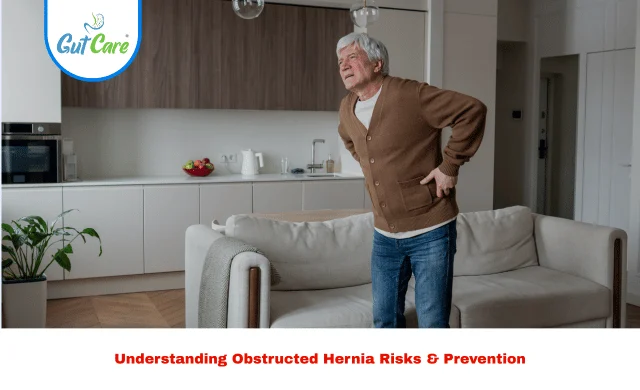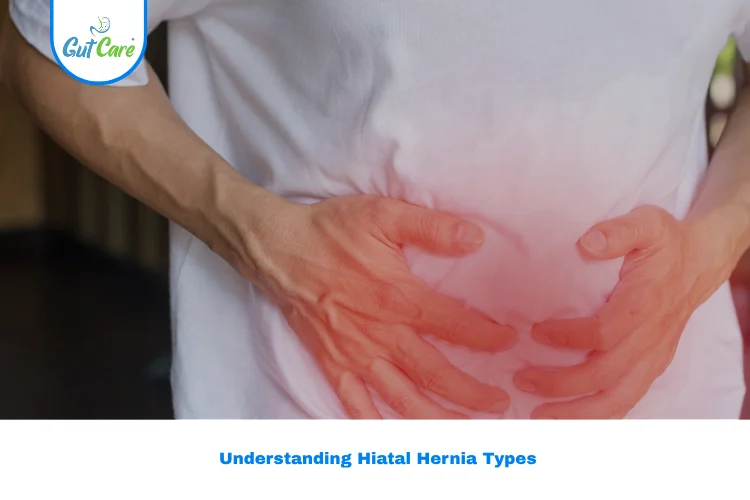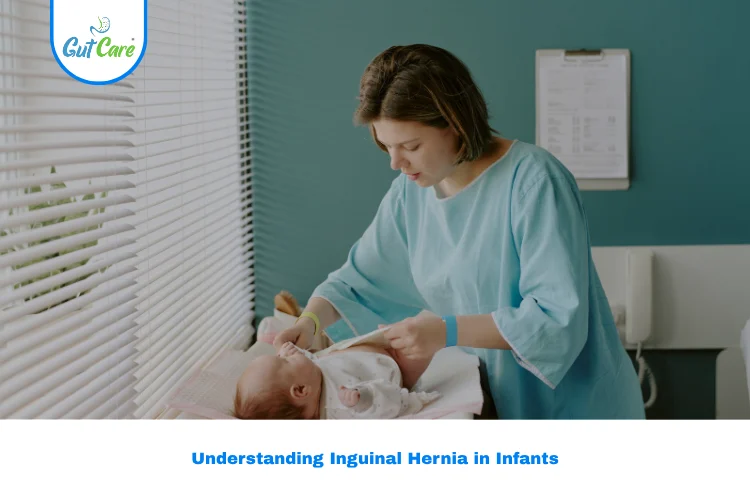A Direct Inguinal Hernia is a common condition that occurs when part of the intestine pushes through a weak spot in the lower abdominal wall, specifically in the inguinal canal. This condition is often seen in adults and can cause discomfort or a visible bulge in the groin area. At Gutcare Clinics, Bangalore, Dr. Yuvrajsingh Gehlot, a skilled colorectal surgeon, provides expert evaluation and safe, effective treatment for all types of hernias. Understanding the Direct Inguinal Hernia its causes, signs, and care helps patients take timely action and avoid complications.
What Is an Inguinal Hernia?
To understand a Direct Inguinal Hernia, it’s important to start with the inguinal hernia definition. An inguinal hernia occurs when soft tissue, usually part of the intestine, protrudes through a weak area in the lower abdominal muscles. This condition is categorized under two main inguinal hernia types direct and indirect.
- Indirect Inguinal Hernia develops due to a congenital defect present from birth.
- Direct Inguinal Hernia develops later in life due to muscle weakness or strain.
Direct Inguinal Hernia Meaning
The Direct Inguinal Hernia meaning refers to a hernia that directly pushes through a weak point in the abdominal wall in the Hesselbach’s triangle an area located in the lower abdomen. It usually occurs in adults, particularly men, and is often associated with aging, heavy lifting, or long-term strain on the abdominal muscles.
Causes of Direct Inguinal Hernia
There are several inguinal hernia causes that lead to the development of a direct hernia. These include:
- Muscle Weakness: Over time, the abdominal muscles can weaken due to age or repetitive strain.
- Heavy Lifting: Frequent lifting of heavy objects increases pressure on the abdominal wall.
- Chronic Cough or Constipation: Persistent coughing or straining can cause the hernia to develop.
- Obesity: Excess body weight adds pressure on the abdominal muscles.
- Previous Surgeries: Surgical scars can create weak spots in the abdominal wall.
- Lack of Exercise: Poor muscle tone can increase hernia risk.
Understanding these hernia reasons helps in prevention and timely treatment.
Inguinal Hernia Signs and Symptoms
Recognizing inguinal hernia signs and symptoms early helps in preventing complications. Common symptoms include:
- A noticeable bulge in the groin or lower abdomen
- Dull pain or discomfort that worsens when bending, lifting, or coughing
- A feeling of heaviness or pressure in the groin
- Mild swelling around the pubic area
- In some cases, the bulge may disappear when lying down
If pain increases or the bulge becomes tender, it’s important to seek immediate medical attention, as these can be signs of complications.
Inguinal Hernia Complications
A Direct Inguinal Hernia can sometimes lead to complications if not treated properly. These include:
- Incarceration: When the protruding tissue becomes trapped and cannot be pushed back into the abdomen.
- Obstruction: A blockage in the intestine due to trapped tissue, leading to pain and digestive discomfort.
- Strangulation: When blood flow to the trapped tissue is cut off, leading to tissue damage (a medical emergency).
Early diagnosis and treatment prevent these inguinal hernia complications and ensure long-term health.
Treatment for Direct Inguinal Hernia
1. Observation and Monitoring
In small or asymptomatic cases, doctors may recommend careful monitoring while maintaining a healthy lifestyle.
2. Surgical Repair
Surgery is the most effective hernia treatment for a Direct Inguinal Hernia. It involves repairing the weakened area and reinforcing it with a mesh to prevent recurrence.
At Gutcare Clinics, Bangalore, Dr. Yuvrajsingh Gehlot offers advanced, minimally invasive surgical options that promote faster recovery and minimal discomfort.
3. Lifestyle Modifications
Post-surgery or for prevention, maintaining a balanced diet, avoiding heavy lifting, and engaging in light exercise are crucial.
Prevention Tips for Direct Inguinal Hernia
While some factors cannot be controlled, simple lifestyle changes can reduce the risk of developing a Direct Inguinal Hernia:
- Maintain a healthy body weight
- Avoid lifting heavy weights incorrectly
- Strengthen abdominal muscles through regular exercise
- Eat fiber-rich foods to prevent constipation
- Quit smoking to avoid chronic coughing
These habits support long-term abdominal health and lower hernia recurrence risk.
When to See a Doctor
If you experience persistent groin pain, swelling, or a visible lump that changes in size, it’s essential to consult a specialist. At Gutcare Clinics, Bangalore, Dr. Yuvrajsingh Gehlot provides detailed evaluation and personalized treatment plans to restore comfort and prevent complications. Early consultation ensures better outcomes and avoids surgical emergencies.
Conclusion
A Direct Inguinal Hernia is a treatable condition when detected early. By understanding its causes, symptoms, and prevention tips, individuals can take control of their health and avoid future complications. The team at Gutcare Clinics, led by Dr. Yuvrajsingh Gehlot, offers expert guidance and advanced care for all types of hernias, ensuring long-lasting relief and recovery.
Frequently Asked Questions (FAQs)
1. What is a Direct Inguinal Hernia?
A Direct Inguinal Hernia occurs when part of the intestine pushes through a weak area in the lower abdominal muscles, often due to strain or aging.
2. What are common causes of Direct Inguinal Hernia?
Common causes include muscle weakness, heavy lifting, obesity, chronic coughing, and previous abdominal surgeries.
3. How is a Direct Inguinal Hernia treated?
Treatment usually involves surgical repair to close the opening and reinforce the abdominal wall, followed by lifestyle changes to prevent recurrence.
4. What are the warning signs of a Direct Inguinal Hernia?
Look for a groin bulge, pain when lifting, or discomfort during activity. Persistent symptoms require medical evaluation.
5. Where can I get expert treatment for a Direct Inguinal Hernia in Bangalore?
You can consult Dr. Yuvrajsingh Gehlot at Gutcare Clinics, Bangalore, for advanced diagnosis and modern hernia treatment options.




